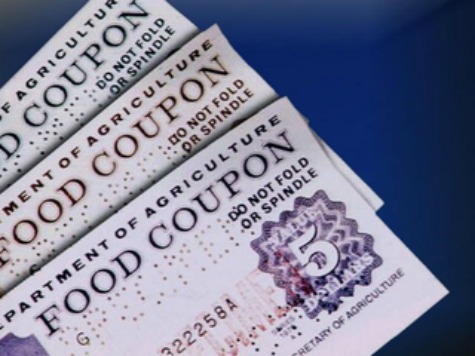
Earlier this year, Congress finally wrapped up work on a new Farm Bill after years of contentious negotiations. Ultimately, Congress agreed to trim a modest $8.6 billion in spending on the food stamp program over the next ten years. The savings amount to less than 10% of total food stamp spending over the next decade, but even these small savings may not materialize as states are already using a loophole to block the spending cuts.
The episode goes a long way towards understanding why cutting government spending is almost impossible. Even when Washington agrees to cut spending, states can often take steps to maximize their share of federal funds and counter the reductions.
In the past, 14 states and the District of Columbia have been able to utilize a federal program called “Heat and Eat” to increase food stamp benefits for certain residents. Any food stamp recipient who also received state assistance to pay for utilities also qualified for extra food stamp assistance.
Under the old law, it didn’t matter how much assistance the recipient received, with many states providing a token $1 a year in assistance to trigger the extra benefits. Congress tried to close this “loophole” by now requiring that states provide at least $20 a year in utility assistance. That’s what counts for a significant cut in Washington.
To almost no one’s surprise, 7 states are simply boosting the utility support to $20 a year to preserve the extra benefits and block the cuts. In many cases states can even use federal funds for their share of the utility support to, effectively, trigger additional federal spending in their state on food stamps.
New York will spend about $6 million in federal funds to preserve $457 million in extra food aid, for example. Even Pennsylvania GOP Gov. Tom Corbett announced the state would spend $8 million federal dollars to keep an extra $300 million in food stamps.
The other seven states that utilized the old loophole are currently considering replicating the moves by the other states to keep the extra spending. Announcements by states already would block $1.2 billion of the $8.6 billion cuts approved by Congress.
Even when Congress agrees to cut money, it doesn’t mean the cuts will actually materialize. States play a parlor game of blaming Washington for unfunded mandates and federal regulations. States, however, are adept at exploiting the system for their own benefit.
“It’s a loophole [Congress] created,” Dave Yacovone, a Vermont state official told USA Today, “so I would say I’m just using the law that they made.”

COMMENTS
Please let us know if you're having issues with commenting.